WEEX Security Alert — High-risk Tokens
High-risk tokens are cryptocurrencies intentionally designed with hidden malicious mechanisms or backdoor code by their creators. These elements are embedded within the smart contract and can be triggered remotely, allowing the team to manipulate the asset for undue profit. While these tokens often appear legitimate—supported by appealing marketing campaigns, active communities, and short-term price pumps—they carry significant underlying dangers. Once activated, these hidden features can lead to sudden fund loss or frozen assets, leaving investors with little recourse.
Common Types of High-risk Token
Honeypot token
Honeypot tokens, often symbolically referred to as “Pixiu tokens” after the mythical Chinese creature that draws in but never releases wealth, represent a particularly deceptive form of crypto scam. These assets are designed as a one-way trap: purchasing is straightforward, but selling becomes technically impossible once the malicious mechanism is activated.
The typical experience begins with an investor discovering a token promoted as the “next big opportunity” and deciding to buy early. As the price rises, the investor attempts to take profit—only to find that every sell transaction is blocked. In the end, the tokens are rendered completely illiquid, leaving holders with nothing but worthless numbers displayed in their wallets.
A real-world example of this scam is GROKAI, a token whose smart contract contained a hidden blacklist function. After attracting a sufficient number of investors, the creators activated this feature to block specified addresses from selling, effectively trapping their funds while enabling the team to exit with profits.
Premature Unlock Scams
Premature unlock scams represent a more covert and sophisticated type of cryptocurrency fraud. In legitimate projects, token lockup periods are standard practice—they prevent early investors and team members from liquidating large holdings immediately after launch, thereby promoting price stability and investor confidence.
In fraudulent schemes, however, these lockup mechanisms are often illusory. Malicious actors embed hidden backdoors or administrative override functions within the smart contract, allowing them to bypass stated vesting schedules and unlock tokens ahead of schedule.
Once the token price reaches a desirable level, insiders abruptly dump their supposedly locked holdings onto the market. This surge in supply causes a rapid price collapse, inflicting significant losses on retail investors who were unaware of the manipulated unlock conditions.
Liquidity Rug-pull Tokens
Rug pull scams typically begin with a project team creating a liquidity pool on a decentralized exchange—such as Uniswap or PancakeSwap—by pairing their own token with a established asset like ETH or USDT. This establishes a baseline trading environment and gives the appearance of legitimacy.
As promotion intensifies and more investors enter the market, the token price often experiences a noticeable rise. Once a significant amount of external capital—especially in the form of stablecoins or blue-chip cryptocurrencies—has entered the pool, the team abruptly withdraws all liquidity without warning. Much like draining a pond and leaving fish stranded, this action removes all market support, causing the token’s value to crash almost instantly.
A prominent example occurred in 2021 with AnubisDAO, which accumulated around $60 million in ETH within its Uniswap liquidity pool. Within just 24 hours of launch, the team removed all liquidity, rendering the token worthless and resulting in catastrophic losses for investors.
Inflationary Scam Tokens
Inflationary scam tokens operate as an unchecked “money printer” for dishonest development teams. While these projects often publicly promote features such as a “fixed supply” or claim to be “non-inflationary,” their smart contracts contain concealed functions that allow unlimited token minting. Investors are led to believe the ecosystem is healthy—trading volume grows, the price trends upward, and the tokenomics appear sound—until the team triggers the hidden mechanism.
Without warning, the creators mint a vast quantity of new tokens and flood the market, causing immediate and severe price depreciation. This rapid dilution devastates holdings, leaving investors with near-worthless assets. A notable instance occurred with YYFI, a fork of YFII, where the team exploited excessive minting authority to collapse the token’s value after exiting with substantial profits.
How to Prevent High-risk Tokens
DYOR and Understand the Project
Investing in digital assets requires diligent and informed exploration. Before committing any funds, ensure you have thoroughly investigated the project:
- Research the Project Team: Look beyond professional profiles and public appearances. Verify the real identities and track records of core team members, especially their experience and outcomes in previous blockchain projects.
- Analyze the Tokenomics: Examine the token’s total supply, circulation, unlock schedule, and utility. Ensure the token has practical applications and sustainable growth mechanisms rather than functioning purely as a speculative instrument.
Prioritize Smart Contract Security
A project’s smart contracts form the foundation of its trustworthiness and technical safety.
- Verify Open-Source Status: Use blockchain explorers like Etherscan or BSCScan to confirm whether the contract is fully open-source. Avoid projects that withhold their source code.
- Leverage Security Tools: Utilize token screening platforms such as Token Sniffer or Go+ to detect common risks like hidden mint functions, excessive permissions, or blacklist mechanisms.
Seek Audits from Reputable Firms: Favor projects that have undergone rigorous third-party smart contract audits by recognized security organizations.
Invest Rationally and Manage Risk
In a volatile and emotionally charged market, rational decision-making is your greatest advantage. Always align investments with your personal context and goals:
- Evaluate Personal Risk Tolerance: Never invest more than you can afford to lose. Your financial and mental well-being should always come first.
- Diversify Your Portfolio: Spread investments across various asset types, development phases, and blockchain ecosystems to mitigate concentrated risk.
- Maintain Emotional Discipline: Ignore short-term noise and focus on long-term value. Avoid impulsive actions driven by FOMO (fear of missing out) or FUD (fear, uncertainty, and doubt). Base decisions on research and fundamental analysis rather than emotion.
By adopting these practices, you not only enhance the safety of your investments but also develop deeper market insight. In the blockchain space, the most successful investors pursue not just profit, but knowledge, discipline, and balanced risk management.
Conclusion
In your Web3 journey, there is no place for spam tokens. While they may appear harmless or even enticing at first glance, these assets are ultimately digital clutter designed to mislead. Avoid clicking, claiming, or interacting with them entirely. By staying vigilant and using the right protective tools, you can maintain a clean wallet, keep your cryptocurrency secure, and stay focused on what truly matters: discovering the real value of blockchain technology—free from the distractions of crypto junk. Send spam back to the trash where it belongs.
Further Reading
You may also like

What is OASIS Coin? OASIS Price Analysis
OASIS is a gaming-centric cryptocurrency designed to serve as the foundational token for an evolving decentralized metaverse ecosystem. Centered on digital identity, virtual worlds, and interconnected experiences, the project describes itself as a “Galaxy of Gaming”—positioned not merely as an in-game currency but as an economic layer for a broader, persistent virtual universe.
Rather than launching a single standalone game, OASIS aims to establish a shared infrastructure where users can navigate across multiple gaming environments, own digital assets, and participate in community-driven virtual economies. This places it within the growing intersection of gaming, decentralized finance, and the metaverse, tapping into long-term narratives around digital ownership and immersive online interaction.
OASIS Token DetailsOASIS operates on the BNB Smart Chain (BSC), utilizing its low transaction fees and high throughput to support seamless gaming and trading activity. Key token specifications include:
Blockchain: BNB Smart ChainToken Standard: BEP-20Token Symbol: OASISTotal & Max Supply: 100,000,000 OASISCirculating Supply: 100,000,000 OASISContract Address: 0x1a4d41219c547f3a0ee36cf3d9e68f80699cf283With the entire supply already in circulation, the token carries no inflationary pressure from future token issuance, placing emphasis on organic demand and ecosystem adoption.
OASIS Use Case and Ecosystem VisionThe project envisions OASIS as a multi-purpose asset within a growing virtual universe, including:
Serving as a primary medium of exchange across interconnected gaming worldsEnabling digital identity and avatar customizationFacilitating cross-platform asset portability and utilitySupporting community-driven virtual economies and governanceWhile the full ecosystem is still in development, the vision aligns with a broader trend toward interoperable, player-owned gaming environments where tokens enable both utility and user participation.
OASIS TokenomicsOASIS employs a straightforward tokenomic structure centered on scarcity and demand-driven valuation:
Fixed maximum supply of 100 million tokensNo inflationary minting or programmed token burnsValue reliant on ecosystem growth, user adoption, and market sentimentDesigned to benefit from network effects as the metaverse expandsThis model can encourage price appreciation during phases of high demand but may also increase volatility in the absence of sustained usage or during broader market downturns.
OASIS Price AnalysisRecently, OASIS achieved a new all-time high, reflecting increased trading interest and positive momentum:
All-time high: ~$0.6773All-time low: ~$0.519624-hour range: $0.6547 – $0.677324-hour change: +3.35%The token has demonstrated a generally upward trajectory since early December, although daily moves remain subject to volatility.
OASIS Technical Price AnalysisFrom a chart perspective, OASIS is currently trading near the upper bounds of its recent range:
Price is testing the upper Bollinger Band around $0.68The middle Bollinger Band near $0.669 acts as dynamic near-term supportRSI readings near 74 suggest overbought conditionsMACD remains in positive territory but shows early signs of momentum decelerationThis technical profile indicates a bullish structure that may be vulnerable to a short-term correction or consolidation if buying pressure subsides.
Key Support and Resistance LevelsBased on recent price action, notable levels include:
Immediate resistance: ~$0.68Psychological resistance: $0.70Near-term support: ~$0.669 (middle Bollinger Band)Secondary support: ~$0.660A sustained hold above the middle Bollinger Band would support continued upward momentum, while a break below could signal a period of retracement or sideways movement.
Is OASIS safe to invest in?Yes, OASIS should be considered a high-risk investment for several reasons:
Execution of its metaverse vision remains unproven and reliant on future developmentThe gaming ecosystem is still conceptual in many respectsThe token recently entered overbought technical territorySentiment in the gaming/metaverse niche can shift rapidly based on broader market conditionsWhile the project’s narrative is compelling, its long-term value will depend on tangible adoption, engaging user experiences, and sustained community growth.
ConclusionOASIS represents an ambitious attempt to build a token-driven metaverse gaming ecosystem on the BNB Smart Chain. Its fixed supply, gaming-focused narrative, and recent technical strength have fueled a notable price advance to new all-time highs.
However, overbought signals and the project’s early-stage status warrant caution. For momentum traders, OASIS offers volatility and short-term opportunity; for long-term holders, its ultimate success will hinge on whether the envisioned “Galaxy of Gaming” materializes into an active, engaged, and economically vibrant virtual universe. As with many gaming and metaverse tokens, prudent risk management and realistic timeframe expectations are advised.
Ready to trade cryptocurrencies?Join WEEX now—enjoy zero trading fees, smooth execution, and instant access. Sign up today and start trading in minutes.
Further ReadingWhat Is APRO (AT) and How Does It Work?What Is Quant (QNT)?What Is Momentum (MMT)?Disclaimer: The opinions expressed in this article are for informational purposes only. This article does not constitute an endorsement of any of the products and services discussed or investment, financial, or trading advice. Qualified professionals should be consulted prior to making financial decisions.
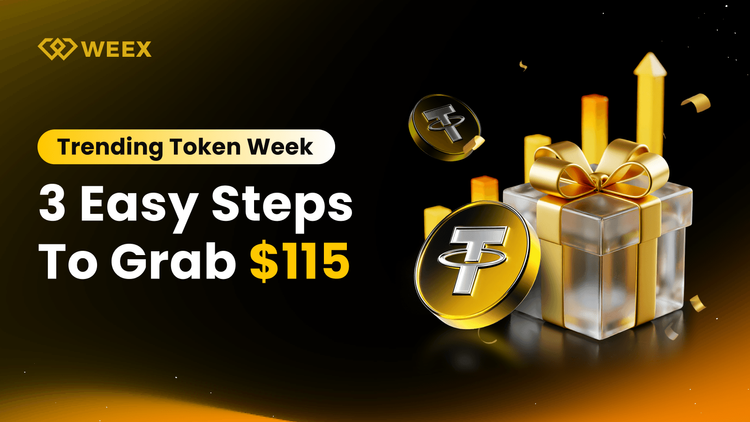
Trending Token Week on WEEX: New Users Share $100,000 in Rewards in Just 3 Easy Steps
Event Period:
December 17, 2025, 19:00 – December 27, 2025, 19:00 (UTC+8)
Eligibility: New users only
WEEX launches Trending Token Week, a limited-time campaign designed for new users to earn crypto rewards with simple, achievable tasks. By completing three easy steps, participants can unlock deposit bonuses, spot trading rewards, and daily futures mystery bonuses—sharing a total prize pool of $100,000.
If you’re looking for a low-barrier way to start trading trending crypto tokens while earning extra rewards, this event is built for you.
What Is Trending Token Week on WEEX?Trending Token Week is a new user welcome campaign featuring some of the most talked-about tokens in the market, including:
ETH, WLFI, UNI, PEPE, SKY, STRK, POWER, ICNT
The event combines deposit incentives, spot trading rewards, and daily futures check-ins, allowing users to earn rewards progressively while exploring both spot and futures markets on WEEX.
Step 1: Deposit and Earn 8 USDTKick off your journey by completing the deposit task.
Deposit RewardMake a net deposit ≥ 100 USDT, orDeposit the equivalent value in any eligible token:ETH, WLFI, UNI, PEPE, SKY, STRK, POWER, ICNT
Reward: 8 USDT
Net deposit = total deposits minus withdrawals during the event period.
Step 2: First Spot Trade and Get 7 USDTOnce your deposit is complete, move on to your first spot trade.
First Spot Trade RewardComplete your first spot trade ≥ 100 USDTTrade must be in one of the eligible event tokens:ETH, WLFI, UNI, PEPE, SKY, STRK, POWER, ICNT
Reward: 7 USDT
This step helps new users get familiar with spot trading while earning an instant bonus.
Step 3: Daily Futures Trading Check-In for Mystery BoxesThe final step unlocks recurring rewards throughout the event.
Daily Trading Check-InTrade ≥ 1,000 USDT in futures (any trading pair)Check in once per day Reward per check-in:
Mystery Box containing 5–10 USDT futures bonus
You can check in every day during the event and earn up to 100 USDT in futures bonuses in total.
All futures bonus rewards will be distributed after the event ends.
Reward Eligibility RulesTo claim all rewards during Trending Token Week, participants must:
Be new WEEX usersComplete tasks in sequence:1️⃣ Deposit task
2️⃣ First spot trade
3️⃣ Daily futures check-inMeet all trading and deposit requirements within the event period
Skipping earlier steps will make subsequent rewards unavailable.
Why Join Trending Token Week on WEEX?✅ Low entry threshold — start with just 100 USDT✅ Trending tokens exposure — trade popular market assets✅ Stackable rewards — deposit, spot, and futures bonuses✅ Daily incentives — earn every day you trade✅ Trusted platform — WEEX supports millions of users globally with deep liquidity and secure infrastructureTrending Token Week is not just a promotion—it’s a structured way for new users to explore the crypto market while earning real trading rewards.
Join Now and Start EarningWith a $100,000 prize pool and only a limited time to participate, Trending Token Week is your chance to start trading smarter on WEEX.
Sign up on WEEX today, complete the three steps, and claim your share of the rewards before December 27, 2025.

Shiba Inu (SHIB) Price Prediction 2026: Will SHIB Bounce Back?
Shiba Inu (SHIB) is a popular meme cryptocurrency operating on the Ethereum blockchain, created in August 2020 by anonymous developer Ryoshi. Inspired by the Shiba Inu dog breed, the token launched with a massive total supply of 1 quadrillion coins. Half of this supply was locked in Uniswap's liquidity pools, while the other half was sent to Ethereum co-founder Vitalik Buterin - who subsequently burned 90% and donated the remainder to India's COVID-19 relief fund.
SHIB's distinctive distribution model combined locked liquidity with high-profile burns and charitable donations. This strategic token allocation, coupled with viral meme appeal, transformed SHIB from a playful experiment into a top-ranking cryptocurrency by market capitalization. The project demonstrates how creative tokenomics can drive adoption in the meme coin space.
Learn More: What Is Shiba Inu and How Does It Work?
Shiba Inu (SHIB): Holder Growth Supports SHIB’s Long-Term ViabilityDespite a prolonged decline in price—down approximately 70% year-over-year and more than 90% below its all-time high—Shiba Inu has demonstrated notable resilience in its holder base. On-chain data indicates that the number of SHIB holders has grown from around 1.46 million to 1.54 million, even amid significant downward price pressure. This pattern often reflects a shift from distribution to accumulation, suggesting that a portion of the market views current levels as a long-term entry opportunity rather than an exit signal.
Large holder activity further reinforces this perspective. Whale balances have expanded by roughly 249% compared to the previous year, with mega-whale wallets increasing their holdings by about 28%. In the most recent 30-day period, whale accumulation accelerated, rising over 60%, which typically indicates strategic positioning rather than short-term trading. Concurrently, SHIB balances held on centralized exchanges have decreased by approximately 22%, reducing readily available sell-side liquidity and supporting the thesis of net accumulation.
These on-chain metrics do not guarantee price appreciation, but they do suggest sustained network participation and reduced immediate sell pressure—factors that can contribute to long-term viability even in a subdued price environment.
Shiba Inu (SHIB) Burn Activity and Market Structure RealityWhile SHIB’s token burn mechanism continues to be a topic of community discussion, its current scale remains insufficient to materially impact the circulating supply. With nearly 589 trillion tokens in circulation, burns in the range of 1 to 10 million SHIB represent a negligible proportion of total supply. For burns to meaningfully influence price dynamics, they would need to be consistently executed at a much larger scale, preferably automated and tied directly to transactional activity or ecosystem utility.
Shiba Inu (SHIB) Price Prediction 2026From a technical standpoint, SHIB appears to be in a consolidation phase within a long-term descending wedge formation. Recent price action has shown signs of seller exhaustion, supported by bullish divergence on the RSI indicator, though this does not yet confirm a trend reversal.
Key price levels to monitor include:
Resistance near $0.0000092, a break above which could signal structural improvement.Support around $0.0000075, where a sustained breach might renew downward momentum.This technical posture suggests that SHIB is currently in a phase of stabilization rather than poised for aggressive recovery, reflecting its transitional status from a meme-driven phenomenon to a token reliant on broader market cycles and sustained holder conviction.
ConclusionA data-informed outlook for Shiba Inu in 2026 points toward endurance rather than explosive growth. The token benefits from a growing holder base, significant whale accumulation, and declining exchange balances—all of which contribute to underlying stability. However, the absence of strong independent demand drivers means that SHIB’s price trajectory remains closely tied to broader altcoin market liquidity and sentiment.
Without a supportive macro environment or a significant catalyst tied to ecosystem utility, SHIB is more likely to consolidate and persist than to stage a major independent rally. Investors should view it as a high-risk asset whose performance will largely depend on market-wide cycles and sustained community engagement rather than fundamental revaluation.
Ready to trade Shiba Inu (SHIB) and other meme coins with ease? Join WEEX now — trade with zero fees, low minimums, and instant access. Sign up and start today.
Further ReadingCardano (ADA) Price Prediction for October 2025: Can $ADA Hit $1?Solana Price Prediction: Can Solana Hit $1,000?PancakeSwap (CAKE) Price Prediction: Can $CAKE Break $5?Disclaimer: The opinions expressed in this article are for informational purposes only. This article does not constitute an endorsement of any of the products and services discussed or investment, financial, or trading advice. Qualified professionals should be consulted prior to making financial decisions.

What is DO Your Meme (DOYR)? DO Your Meme (DOYR) Prediction 2026–2030
DOYR (DO Your Meme) is a recently launched meme token on the Binance Smart Chain (BSC), introduced on December 8, 2025. Positioned firmly within the speculative micro-cap category, it features a massive total supply of 444 quadrillion tokens and is driven primarily by community momentum rather than technical utility or defined use cases. Currently ranked outside the top 4600 on CoinMarketCap, DOYR exhibits the high volatility and early-stage uncertainty typical of newly emerging meme assets.
With a trading price around $0.000000000122658 and a fully diluted valuation (FDV) of approximately $118,000, DOYR represents an ultra-speculative opportunity—and risk. This analysis explores the token's market structure, behavioral patterns, and potential price trajectory through 2030.
What Is DOYR (DO Your Meme)?DOYR (DO Your Meme) is a community-driven meme cryptocurrency built on the BSC network, identified by the contract address 0x930d852edc1df7b034594ef040fa3b279fee218d. The project does not currently offer clear technological utility, a structured roadmap, or long-term development plans. Instead, its value proposition is rooted entirely in meme culture, social engagement, and speculative trading activity.
This lack of foundational utility places DOYR among the thousands of highly inflationary meme tokens that experience rapid, sentiment-driven price movements. While such tokens can occasionally deliver short-term gains, they also carry elevated risks of abandonment, liquidity loss, or fraudulent activity.
DOYR (DO Your Meme) Market SnapshotAs an extremely new asset, DOYR has traded within a narrow range between $0.000000000000122605 and $0.000000000000122678 in its first 24 hours. Its all-time high and low were both recorded on December 8, 2025, reflecting its early lifecycle stage.
Current holder numbers are low—around 303 addresses—indicating limited initial adoption alongside heightened concentration risk. Community interaction and promotional updates, largely shared via Twitter (@DOYR_DOYR) and Telegram, play a significant role in shaping short-term sentiment and trading activity.
DOYR (DO Your Meme) Price Prediction (2026–2030)DOYR (DO Your Meme) Price Prediction 2026Optimistic: If community growth accelerates and exchange listings expand, speculative interest could drive prices toward $0.000000001 – $0.00000001.Base Case: Limited traction leads to sideways movement with occasional volatility, trading in the range of $0.00000000005 – $0.0000000002.Pessimistic: Declining engagement and liquidity may push the token toward near-zero valuation.DOYR (DO Your Meme) Price Prediction 2027Optimistic: In a broader bullish market, meme tokens could experience renewed speculative interest, with DOYR potentially reaching $0.000000005 – $0.00000002.Base Case: Moderate activity with gradual decline, trading between $0.00000000008 – $0.0000000005.Pessimistic: Loss of developer and community support may lead to abandonment.DOYR (DO Your Meme) Price Prediction 2028Optimistic: In the unlikely event of a sustained viral breakthrough, prices could climb toward $0.00000001 – $0.00000005.Base Case: Continued stagnation or slow decline due to absence of utility, trading around $0.00000000003 – $0.0000000002.Pessimistic: Liquidity and interest may fully dissipate.DOYR (DO Your Meme) Price Prediction 2029Optimistic: Survival through multiple market cycles could support a price range of $0.00000005 – $0.00000008.Base Case: Low-volume persistence, with prices between $0.00000000002 – $0.0000000001.Pessimistic: Minimal trading activity remains.DOYR (DO Your Meme) Price Prediction 2030Optimistic: In a best-case scenario involving meme token resurgence or cultural relevance, DOYR could approach $0.0000001.Base Case: Fading relevance and liquidity, trading between $0.00000000001 – $0.00000000005.Pessimistic: Project inactivity leads to near-zero value.ConclusionDOYR (DO Your Meme) embodies the high-risk, high-volatility nature of emerging meme tokens on the Binance Smart Chain. While its early-stage metrics reflect speculative interest and community-driven momentum, the absence of underlying utility or long-term planning presents significant sustainability challenges.
Participants are advised to conduct thorough due diligence, verify contract details, and exercise strict risk management when engaging with newly launched meme assets. Until broader exchange support materializes, decentralized platforms such as PancakeSwap remain the primary venue for DOYR trading.
Ready to trade? Sign up on WEEX today and start trading DOYR (DO Your Meme) with ease and confidence!
Further ReadingWhat Is APRO (AT) and How Does It Work?What Is Quant (QNT)?What Is Momentum (MMT)?Disclaimer: The opinions expressed in this article are for informational purposes only. This article does not constitute an endorsement of any of the products and services discussed or investment, financial, or trading advice. Qualified professionals should be consulted prior to making financial decisions.

What Is Lucidum (LUCIC)?
Lucidum Coin (LUCIC), operating on Binance Smart Chain, introduces a transparent contract model designed to build investor trust through clear milestones and financial disclosures, trading at around $0.296 with a $48.5 million market cap.
The project emphasizes accountability with 4.5% transaction taxes funding liquidity dividends, marketing, and burns, while its roadmap ties development to BNB market cap achievements.
As a one-year-old token listed on CoinGecko, LUCIC combines meme appeal with structured growth plans amid recent 49% daily surges on PancakeSwap.
Key TakeawaysTransparent contract model discloses progress and finances, verified by independent third parties.Tokenomics include a fixed 210 million total supply, with taxes allocated to LP rewards, marketing, and deflationary burns.Roadmap development is tied to BNB market cap thresholds, targeting milestones from audits to exchange listings.Strong security profile with clean audits, no detected honeypot risks, and growing liquidity and holder base.What Is Lucidum (LUCIC)?Lucidum Coin positions itself as a project built around transparency and verifiable progress. Its core model centers on a publicly visible contract framework, ensuring that all financial flows and development milestones are disclosed in real time. This stands in contrast to many speculative token launches, where details remain opaque and inaccessible to average investors.
By linking tangible growth objectives to specific, measurable milestones, Lucidum aims to foster realistic expectations and build sustainable trust. The project has seen steady adoption, now supported by over 12,800 token holders—a testament to the appeal of its structured, community-verifiable approach within the highly competitive BNB Chain ecosystem.
Lucidum (LUCIC) TokenomicsLUCIC operates with a fixed total supply of 210 million tokens. A 4.5% transaction fee is applied to every buy and sell, distributed as follows:
1.5% to liquidity provider dividends, incentivizing long-term staking and pool stability.2% to marketing and ecosystem growth initiatives.1% to permanent token burns, creating consistent deflationary pressure over time.This tax structure is designed to align incentives across stakeholders, supporting liquidity while gradually reducing circulating supply. The contract has undergone multiple independent security audits and is publicly accessible, with no major vulnerabilities detected. The current fully diluted valuation stands at approximately $61.5 million.
Lucidum (LUCIC) RoadmapLucidum’s development is structured around progressive BNB market capitalization targets, ensuring that funding and visibility grow in tandem with genuine community interest and adoption. Key phases include:
100 BNB: Completion of third-party security audits.300 BNB: Integration with external wallets and exchange APIs.500 BNB: Expansion of marketing partnerships and mainstream visibility campaigns.5,000 BNB: Launch of dividend-earning NFTs for liquidity providers.10,000 BNB: Application for listing on tier-one centralized exchanges.This gated approach aims to create a self-sustaining growth loop, where each milestone is funded and validated by market-driven momentum rather than speculative hype.
Lucidum (LUCIC) Trading, Security, and CommunityThe primary trading pair for LUCIC is LUCIC/WBNB on PancakeSwap V2, supported by over $6.3 million in pooled liquidity. This ensures low slippage and stable trade execution for investors.
Security reviews from platforms such as Cyberscope, Honeypot.is, and QuillCheck have confirmed the contract’s safety, with no evidence of malicious code or honeypot mechanisms. Community interaction is centered on the project’s official website, Twitter, and Telegram channels, where updates are regularly shared alongside educational content.
Leveraging the speed and affordability of Binance Smart Chain, Lucidum aims to remain accessible to a broad base of retail users while pursuing structured growth through its transparent and milestone-driven model.
Further ReadingWhat Is APRO (AT) and How Does It Work?What Is Quant (QNT)?What Is Momentum (MMT)?Disclaimer: The opinions expressed in this article are for informational purposes only. This article does not constitute an endorsement of any of the products and services discussed or investment, financial, or trading advice. Qualified professionals should be consulted prior to making financial decisions.
FAQQ1: What is Lucidum Coin (LUCIC)?
A: Lucidum Coin (LUCIC) is a Binance Smart Chain-based cryptocurrency that operates under a transparent contractual framework. The project features a total supply of 210 million tokens and implements a 4.5% transaction fee, which supports liquidity provider dividends, marketing activities, and deflationary token burning to promote accountability and sustainable growth.
Q2: What are LUCIC tokenomics?
A: LUCIC applies a 4.5% tax on every transaction, distributed as follows: 1.5% is allocated to liquidity provider dividends, 2% is used for marketing, and 1% is permanently burned. The token is actively traded on PancakeSwap V2 with a liquidity pool of approximately $6.3 million and is currently held by over 12,800 wallet addresses.
Q3: How does LUCIC roadmap work?
A: The project’s roadmap is structured around achieving specific Binance Coin (BNB) market capitalization milestones. For instance, an external audit is completed upon reaching 100 BNB market cap, wallet integrations occur at 300 BNB, influencer partnerships are initiated at 500 BNB, and major exchange listings — including Binance — are targeted at 10,000 BNB market cap.
Q4: Is LUCIC safe to trade? A: LUCIC has received a GT Score of 80/100, reflecting strong on-chain metrics. Security scans from platforms such as De.Fi and GoPlus have detected no honeypot or rug-pull risks. The contract code is open-source, has passed a third-party audit, and currently has zero reported security incidents from the community.
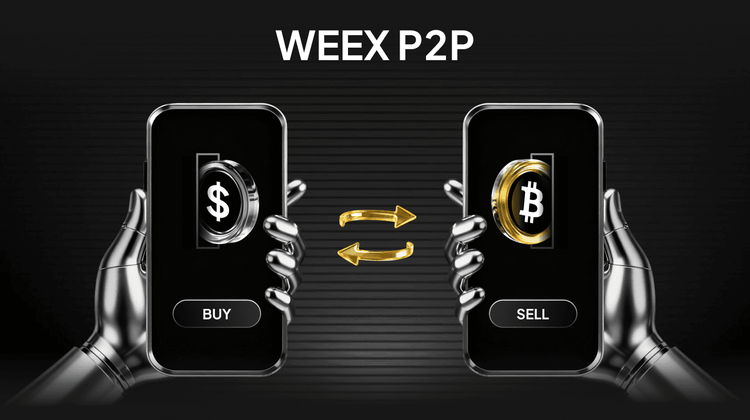
Buy USDT with SBP-Fast Bank Transfer on WEEX P2P – 0 Fee & Ultra-Fast RUB Trades
SBP-Fast Bank Transfer is a top-choice option in Russia, offering users a fast and reliable way to buy crypto using RUB. With WEEX P2P, users can buy crypto directly through SBP-Fast Bank Transfer with zero fees, access 24/7 verified merchants, and enjoy ultra-fast release times.
Compared with Binance, Bybit, and local OTC platforms, WEEX consistently offers better RUB exchange rates, safer escrow protection, and more available ads for SBP-Fast Bank Transfer users.
With crypto adoption rising across Russia, reliable and fast access to digital assets has turned into a key requirement for users. With WEEX P2P, users can buy USDT, BTC, or ETH via SBP-Fast Bank Transfer with instant processing, 0% buyer fees, and professional merchant support.
What is P2P Trading?
Peer-to-Peer (P2P) trading allows users to buy and sell crypto directly with other users, while the platform acts as a secure intermediary.
On WEEX P2P:
Crypto is held in escrowSellers release assets only after payment is confirmedTrades are processed quickly and safelyThis ensures zero counterparty risk and allows users to pay via local banking methods for a seamless experience.
Why WEEX P2P is the Best Choice for SBP-Fast Bank Transfer Users
WEEX P2P offers key advantages to users purchasing crypto with RUB via SBP-Fast Bank Transfer:
0% fee for buyers (save 2-8% vs competitors)Fast release times (1–3 minutes on average)Official escrow protection – 100% safeSupport from small amounts to large-volume tradesBest RUB exchange rates for SBP-Fast Bank Transfer usersThousands of merchants online 24/7More SBP-Fast Bank Transfer ads than any competing platformWhether you’re buying 1,000 RUB or 1,000,000 RUB, WEEX ensures fast, safe, and cost-efficient crypto purchases.
How to Buy USDT with SBP-Fast Bank Transfer on WEEX P2P
Buying crypto with SBP-Fast Bank Transfer on WEEX is simple and fast. Follow these steps:
Register on WEEX and complete basic KYC Takes less than 1 minute.Go to Buy Crypto → P2P Trading Select RUB as your fiat currency.Filter by “SBP-Fast Bank Transfer” You will now only see advertisements that support SBP-Fast Bank Transfer transfers.Select the best merchant Compare based on:PriceCompletion rateVolumeOnline statusEnter the amount you want to buy The system will show your exact cost in RUB.Make the payment via SBP-Fast Bank Transfer Transfer the amount shown using the merchant’s bank details.Tap “Transferred, Notify Seller” The seller will verify your payment and release crypto.Your USDT will arrive instantly in your WEEX wallet — safe, fast, and with zero fees.
Frequently Asked Questions (FAQ)
Q1: Are there any fees when paying with SBP-Fast Bank Transfer? A: 0% fee for buyers. Only sellers pay a small fee.
Q2: How fast will I receive USDT? A: Usually 1–5 minutes after marking payment as sent.
Q3: Is buying with SBP-Fast Bank Transfer safe on WEEX? A: Yes. All trades use official escrow.
Q4: Do I need full KYC? A: Basic KYC is required for P2P trading.
Ready to Buy USDT with SBP-Fast Bank Transfer?
Start buying crypto in under 3 minutes — fast, safe, and 0% fee for buyers!
Start Buying USDT on WEEX P2P with SBP-Fast Bank Transfer Now!

Buy USDT with T-Bank on WEEX P2P – 0 Fee & Fast RUB Trades
In 2025, T-Bank remains one of the most popular and reliable ways for users in Russia to buy cryptocurrency with RUB. With WEEX P2P, users can buy crypto directly through T-Bank with zero fees, access 24/7 verified merchants, and enjoy ultra-fast release times.
Compared with Binance, Bybit, and local OTC platforms, WEEX consistently offers better RUB exchange rates, safer escrow protection, and more available ads for T-Bank users.
As crypto adoption grows in Russia, fast and secure access to digital assets has become essential. With WEEX P2P, users can buy USDT, BTC, or ETH via T-Bank with instant processing, 0% buyer fees, and professional merchant support.
What is P2P Trading?
Peer-to-Peer (P2P) trading allows users to buy and sell crypto directly with other users, while the platform acts as a secure intermediary.
On WEEX P2P:
Crypto is held in escrowSellers release assets only after payment is confirmedTrades are processed quickly and safelyThis ensures zero counterparty risk and allows users to pay via local banking methods for a seamless experience.
Why WEEX P2P is the Best Choice for T-Bank Users in 2025
WEEX P2P offers key advantages to users purchasing crypto with RUB via T-Bank:
0% fee for buyers (save 2-8% vs competitors)Fast release times (1–3 minutes on average)Official escrow protection – 100% safeSupport from small amounts to large-volume tradesBest RUB exchange rates for T-Bank usersThousands of merchants online 24/7More T-Bank ads than any competing platformWhether you’re buying 1,000 RUB or 1,000,000 RUB, WEEX ensures fast, safe, and cost-efficient crypto purchases.
How to Buy USDT with T-Bank on WEEX P2P
Buying crypto with T-Bank on WEEX is simple and fast. Follow these steps:
Register on WEEX and complete basic KYC Takes less than 1 minute.Go to Buy Crypto → P2P Trading Select RUB as your fiat currency.Filter by “T-Bank” You will now only see advertisements that support T-Bank transfers.Select the best merchant Compare based on:PriceCompletion rateVolumeOnline statusEnter the amount you want to buy The system will show your exact cost in RUB.Make the payment via T-Bank Transfer the amount shown using the merchant’s bank details.Tap “Transferred, Notify Seller” The seller will verify your payment and release crypto.Your USDT will arrive instantly in your WEEX wallet — safe, fast, and with zero fees.
Frequently Asked Questions (FAQ)
Q1: Are there any fees when paying with T-Bank? A: 0% fee for buyers. Only sellers pay a small fee.
Q2: How fast will I receive USDT? A: Usually 1–5 minutes after marking payment as sent.
Q3: Is buying with T-Bank safe on WEEX? A: Yes. All trades use official escrow.
Q4: Do I need full KYC? A: Basic KYC is required for P2P trading.
Ready to Buy USDT with T-Bank?
Start buying crypto in under 3 minutes — fast, safe, and 0% fee for buyers!
Start Buying USDT on WEEX P2P with T-Bank Now!

ASTER Airdrop on WEEX Exchange: Claim Your Share of 50,000 USDT in the New User Welcome Reward
The ASTER Airdrop on WEEX Exchange is offering a 50,000 USDT new user welcome reward from December 9 to December 16, 2025. Newcomers can unlock rewards through a simple three-step journey: complete a 100 USDT net deposit, trade eligible ASTER tokens, and achieve futures trading volume tiers. Additional rewards such as proportional futures prizes and referral bonuses make this ASTER Airdrop one of the most valuable newcomer events on WEEX. With limited quotas and first-come, first-served distribution, users joining the WEEX Exchange now can maximize their rewards before the ASTER Airdrop ends.
What Is the ASTER Airdrop on WEEX Exchange?The ASTER Airdrop is a limited-time 50,000 USDT new user welcome reward designed to support first-time users joining the WEEX Exchange. Running from December 9, 2025, 15:00 (UTC+8) to December 16, 2025, 15:00 (UTC+8), the event highlights WEEX’s commitment to creating a secure, rewarding environment for new traders.
ASTER is a next-generation decentralized exchange offering both perpetual and spot trading with MEV-free execution in Simple Mode and advanced tools—such as stock perpetuals, Hidden Orders, and grid trading—in Pro Mode. Its ecosystem spans BNB Chain, Ethereum, Solana, and Arbitrum, making it a strong candidate for future growth.
Event 1: First Deposit & First Spot Trade – Earn 10 USDTReward: 10 USDT(限前 1,000 名)
To begin the ASTER Airdrop journey, new users must:
Once completed, users instantly qualify for the 10 USDT new user reward.
This task acts as the foundation for all subsequent ASTER Airdrop rewards on the WEEX Exchange.
???? Quota is limited to the first 1,000 participants—so speed matters.
Event 2: Futures Trading Tasks – Earn Up to 30 USDTAchieving valid futures trading volume unlocks tiered base rewards plus USDT bonus rewards:
Futures VolumeBase RewardBonus RewardTotal≥ 500 USDT5 USDT+5 USDT bonus10 USDT≥ 5,000 USDT10 USDT+5 USDT bonus15 USDT≥ 10,000 USDT20 USDT+10 USDT bonus30 USDTRewards are limited to the first 1,000 participants.
Only USDT-M futures pairs qualify; Coin-M pairs and 0% maker fee trades are excluded.
Event 2 must be completed after Event 1 to unlock eligibility.
Event 3: Share the 20,000 USDT Futures Prize PoolFor users aiming higher, achieving ≥ 20,000 USDT futures trading volume grants access to the 20,000 USDT proportional prize pool.
Your reward =
(Your futures volume ÷ Total eligible volume) × 20,000 USDT
This mechanism encourages active participation and rewards users based on actual contribution—mirroring real trading strategies on the WEEX Exchange.
Event 4: Earn Up to 1,000 USDT With ReferralsBoth new and existing users can participate in the ASTER Airdrop referral task.
You will receive 10 USDT for every valid referral, where a valid referral =
✔ The invitee completes Event 1
✔ The invitee completes Event 2
Rewards scale up to 1,000 USDT per user.
This makes referrals one of the strongest earning opportunities during the new user welcome reward campaign.
Reward Eligibility & Key RulesTo maximize rewards in the ASTER Airdrop on WEEX Exchange, keep these rules in mind:
Must register during the event and complete KYCEvent 1 → Event 2 must be completed in orderSpot volume = buys + sellsFutures volume = opening + closingOnly USDT-M futures pairs countMarket makers and institutional accounts are excludedRewards are distributed within 7 working days after event endsWEEX will disqualify users who engage in bulk registrations, fraud, or manipulationAll participants accept the final interpretation rights held by WEEX ExchangeWhy the ASTER Airdrop Is a Top Opportunity for New UsersThe 50,000 USDT ASTER Airdrop blends newcomer-friendly tasks with high-value rewards, allowing traders to grow their portfolio while learning the WEEX ecosystem. With tiered perks, proportional prize pools, and referral bonuses, the event gives every new user a meaningful chance to earn.
As the event ends on December 16, 2025, the countdown is ticking.
Now is the ideal time to join WEEX, complete your tasks, and claim your share of this new user welcome reward.
Don’t miss the final days of the ASTER Airdrop—register on the WEEX Exchange, complete the tasks, and unlock your share of the 50,000 USDT reward pool.
Start your journey now and maximize your earnings before the event ends.
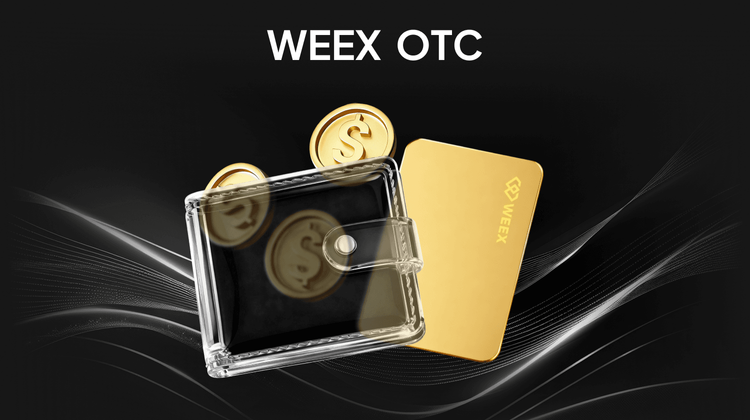
What is WEEX OTC and How to Buy USDT with GBP on WEEX OTC?
WEEX has officially launched our WEEX OTC Quick Buy feature to help make fiat deposits more convenient and accessible. Enjoy more payment options with a secure, seamless.
WEEX OTC platform now supports 200+ trading pairs and multiple mainstream payment methods.
You can use Fiat to purchase cryptocurrencies anytime, anywhere on the WEEX OTC platform, and enjoy Quick Buy in just three steps.
How to Buy USDT with GBP on WEEX OTC?Web Version:Step 1: On the WEEX OTC platform, you can select the fiat currency [GBP] and crypto [USDT], you can input the [GBP] payment amount, then this will estimate the amount of USDT you will receive.
Step 2: Choose the the payment method which you want to use, then click the [Confirm].
Step 3: After choosing the payment method, click the [Buy USDT] and place the buy USDT with GBP order.
Step 4: After confirming the order, we will redirect to the payment channel to complete the transaction.You will receive the USDT in 5 min after your order payment is completed.
APP Version:Step 1: On the WEEX APP,click the [Deposit] and select the [Buy crypto], you will enter the OTC platform.
Step 2: Selecting fiat [GBP] and crypto [USDT], you can input the [GBP] payment amount, then this will estimate the amount of USDT you will receive.
Step 3: Choose the the payment method which you want to use, then click the [Confirm].
Step 4: After choosing the payment method, click the [Buy USDT] and place the buy USDT with GBP order.
Step 5: After confirming the order, we will redirect to the payment channel to complete the transaction. You will receive the USDT in 5 min after your order payment is completed.
Follow WEEX on social media:
Instagram: @WEEX_ExchangeX: @WEEX_OfficialTiktok: @weex_globalYoutube: @WEEX_GlobalTelegram: WeexGlobal Group
What is WEEX OTC and How to Buy Crypto with GBP on WEEX OTC?
WEEX has officially launched our WEEX OTC Quick Buy feature to help make fiat deposits more convenient and accessible. Enjoy more payment options with a secure, seamless.
WEEX OTC platform now supports 200+ trading pairs and multiple mainstream payment methods.
You can use Fiat to purchase cryptocurrencies anytime, anywhere on the WEEX OTC platform, and enjoy Quick Buy in just three steps.
How to Buy Crypto with GBP on WEEX OTC?Web Version:Step 1: On the WEEX OTC platform, you can select the fiat currency [GBP] and crypto like USDT or other, you can input the [GBP] payment amount, then this will estimate the amount of crypto you will receive.
Step 2: Choose the the payment method which you want to use, then click the [Confirm].
Step 3: After choosing the payment method, click the [Buy USDT] and place the buy USDT with GBP order.
Step 4: After confirming the order, we will redirect to the payment channel to complete the transaction.You will receive the USDT in 5 min after your order payment is completed.
APP Version:Step 1: On the WEEX APP,click the [Deposit] and select the [Buy crypto], you will enter the OTC platform.
Step 2: Selecting fiat [GBP] and crypto like USDT, you can input the [GBP] payment amount, then this will estimate the amount of crypto you will receive.
Step 3: Choose the the payment method which you want to use, then click the [Confirm].
Step 4: After choosing the payment method, click the [Buy USDT] and place the buy USDT with GBP order.
Step 5: After confirming the order, we will redirect to the payment channel to complete the transaction. You will receive the USDT in 5 min after your order payment is completed.
Follow WEEX on social media:
Instagram: @WEEX_ExchangeX: @WEEX_OfficialTiktok: @weex_globalYoutube: @WEEX_GlobalTelegram: WeexGlobal Group
MON Airdrop 50,000 USDT – New User Welcome Event | Deposit, Trade & Earn Rewards
Event Duration:
2025/12/04 18:00:00 – 2025/12/11 18:00:00 (UTC+8)
Monad is a high-performance Layer 1 blockchain designed to overcome the scalability bottlenecks of existing networks—especially Ethereum—while offering full EVM compatibility. With its innovative architecture, Monad aims to support faster, more efficient decentralized applications and next-generation on-chain ecosystems.
To help new users join the Monad ecosystem, WEEX is launching the MON Airdrop with 50,000 USDT rewards, available exclusively for new users completing simple trading tasks.
Event 1: First Deposit & Spot Trade – Earn 10 USDTTo qualify:
Make a net deposit ≥ 100 USDTHold the deposited amount until the event endsComplete your first spot trade in eligible tokensReward: 10 USDT
Quota: Limited to 1,000 new users, on a first-come, first-served basis.
This task helps new users start trading while receiving guaranteed reward incentives.
Event 2: Futures Trading Volume Task – Earn up to 20 USDT + BonusReach the required trading volume in any futures pair to claim:
Base RewardRequired Futures Trading Volume5 USDT500 USDT10 USDT5,000 USDT20 USDT10,000 USDTUsers who complete Event 1 will receive an additional 5 – 10 USDT futures bonus based on their trading activity.
Quota: Limited to 1,000 participants.
Event 3: Share 20,000 USDT Futures Prize PoolTrade ≥ 20,000 USDT in futuresEarn a proportional share of the 20,000 USDT prize pool, distributed based on total trading volume.This prize pool rewards active futures traders and enhances engagement within the MON event.
Reward Eligibility RequirementsTo receive rewards:
Users must complete Event 1 → Event 2 in orderParticipants who skip or reverse the sequence will not qualify for distributionWhy Join the MON Airdrop Event?50,000 USDT total prize poolEasy onboarding with high-value rewardsBonus incentives for futures tradersLimited quota increases reward certaintySupports the growth of Monad, a next-gen high-performance blockchainThis event is designed for users who want to explore the Monad ecosystem while earning attractive USDT rewards on WEEX.

TEA Airdrop – New User Welcome Reward
50,000 USDT Prize Pool
Event Period: 2025/12/04 15:00 – 2025/12/11 15:00 (UTC+8)
TEA Protocol is an open-source reward Layer-2 led by Max Howell, the creator of Homebrew. Built on an OP Stack Ethereum L2 architecture, TEA Network distributes rewards to open-source contributors through a proof-of-contribution mechanism.
This SEO-enhanced section targets keywords including TEA Protocol, Ethereum L2, open-source rewards, and crypto airdrop to support search visibility.
Make a net deposit ≥ 100 USDT, hold it until the event ends, and complete your first spot trade in eligible event tokens to receive 10 USDT.
Limited to the first 1,000 users, first-come, first-served.
Reach the required futures trading volume in any pair to claim a base reward plus an additional 5–10 USDT futures bonus.
Reward tiers:
Base RewardRequired Futures Volume5 USDT500 USDT10 USDT5,000 USDT20 USDT10,000 USDTUsers who trade ≥ 20,000 USDT in futures during the event will also share the 20,000 USDT prize pool, distributed proportionally based on trading volume.
Reward EligibilityParticipants must complete Event 1 and Event 2 in sequence to be eligible for all rewards.
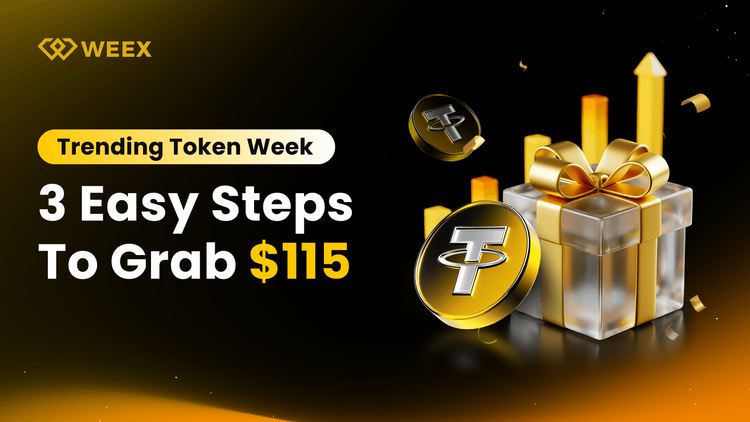
Trending Token Week – New Users Only
Share 100,000 USDT in Three Easy Steps – Up to 115 USDT per User
Event Period: 2025/12/03 17:00 – 2025/12/13 17:00 (UTC+8)
Trending Token Week is an exclusive reward campaign for new users. By completing simple deposit, spot trading, and futures trading tasks, participants can unlock up to 115 USDT in bonuses and share a 100,000 USDT prize pool. Eligible tokens include: ETH, PAXG, VSN, WMTX, ARC, B, ESPORTS, FOLKS.
How to Earn Up to 115 USDTEvent 1 — Deposit Reward (Get 8 USDT)Make a net deposit ≥ 100 USDT or the equivalent in any eligible token (ETH, PAXG, VSN, WMTX, ARC, B, ESPORTS, FOLKS) to receive 8 USDT.
Event 2 — First Spot Trade Reward (Get 7 USDT)Make your first spot trade in any eligible event token with trading volume ≥ 100 USDT to receive 7 USDT.
Applicable tokens:
ETH, PAXG, VSN, WMTX, ARC, B, ESPORTS, FOLKS
Trade ≥ 1,000 USDT in any futures pair each day to check in and receive a Mystery Box containing a 5–10 USDT futures bonus.
You can check in once per day during the event and earn up to 100 USDT.
All bonuses will be distributed after the event ends.
Participants must complete Event 1 → Event 2 → Event 3 in sequence to unlock all rewards available during Trending Token Week.

KABUTO Airdrop – New User Welcome Reward
50,000 USDT Prize Pool
Event Period: 2025/12/02 18:00 – 2025/12/09 18:00 (UTC+8)
KABUTO originates from the first-generation fossil Pokémon Kabuto, an ancient crab-like creature. This meme project’s founder claims that transaction fees generated on-chain will be used to purchase real-world Pokémon cards, giving the ef="/wiki/article/token-259">token its unique community-driven theme.
This SEO-optimized version highlights key terms such as crypto airdrop, new user rewards, USDT bonus, and futures trading rewards to improve search visibility.
How to Join & Earn RewardsEvent 1 — First Deposit and Spot Trade (Get 10 USDT)Make a net deposit ≥ 100 USDT, hold it until the event ends, and complete your first spot trade in eligible tokens to receive 10 USDT.
Rewards are limited to the first 1,000 participants on a first-come, first-served basis.
Reach the required futures trading volume in any pair to earn a base reward plus an additional 5–10 USDT futures bonus.
Reward structure:
Base RewardRequired Futures Volume5 USDT500 USDT10 USDT5,000 USDT20 USDT10,000 USDTAdditionally, trade ≥ 20,000 USDT in futures across any pair to share the 20,000 USDT prize pool, distributed proportionally based on trading volume.
Reward EligibilityParticipants must complete Event 1 → Event 2 in sequence to qualify for all available rewards.

MADAOCHENGGONG Airdrop – 50,000 USDT New User Welcome Reward
Event Period: 2025/12/02 17:00 – 2025/12/09 17:00 (UTC+8)
About MADAOCHENGGONG (Instant Success Token)MADAOCHENGGONG is a community-driven meme token born from a viral Twitter post themed around “instant success and good fortune.”
With a white horse symbolizing swift victory and an elegant woman featured in its logo artwork, the token represents positivity, good luck and rapid growth — quickly becoming a trending asset across the meme ecosystem.
Designed for new users, this welcome event rewards deposits, spot trading and futures participation. Complete tasks in sequence to unlock rewards.
Event 1 — First Deposit & First Spot TradeComplete the following tasks to receive 10 USDT:
Net deposit ≥ 100 USDTHold the deposit until the event endsComplete your first spot trade in eligible tokensReward quota: first 1,000 participants (first-come, first-served)
Event 2 — Futures Trading Volume RewardsUnlock an additional bonus by reaching the required futures trading volume in any pair.
Trading Volume Requirements & RewardsTrade ≥ 500 USDT → 5 USDTTrade ≥ 5,000 USDT → 10 USDTTrade ≥ 10,000 USDT → 20 USDTReward quota: first 1,000 participants (first-come, first-served)
Event 3 — Share the 20,000 USDT Futures Prize PoolTrade ≥ 20,000 USDT in any futures pair to qualify for a share of the 20,000 USDT prize pool, distributed proportionally based on your trading volume.
Reward EligibilityParticipants must complete Event 1 and Event 2 in order to qualify for all rewards and prize pool distribution.
Why Participate in the MADAOCHENGGONG Airdrop?50,000 USDT total reward poolBeginner-friendly tasks with clear progressionCombined spot and futures rewards for higher earning potentialTrending meme token with strong community tractionLimited reward quotas offering better chances for early participants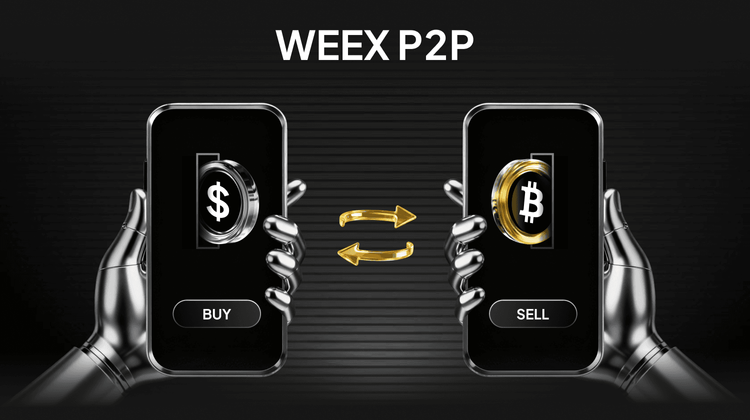
What is P2P Trading and How to Buy USDT via WEEX P2P?
Peer-to-peer (P2P) cryptocurrency trading entails buying and selling digital currencies directly between users without a central intermediary. This method grants users control over pricing, partner selection, and transaction timing, allowing experienced traders to capitalize on favorable conditions. However, this very freedom also opens the door to various p2p money transfer scam schemes that every user must recognize.
Why WEEX P2P is the Best Choice in 2025?WEEX P2P provides several advantages that make it the top platform to buy USDT. Buyers enjoy zero transaction fees, while professional merchants ensure fast confirmations and smooth trade execution at all hours. WEEX’s official escrow service protects every transaction end-to-end, removing all counterparty risk.
0% fee for buyers (save 2-8% vs competitors)Average trade completion: under 3 minutesOfficial escrow protection – 100% safeSupports from 500 [Currency] up to millionsMore [Payment Method] ads than any other platformHow to Buy USDT via WEEX P2P?Step 1. Select an offerSelect an offer with your preferred price and payment method. After you enter the amount you want to buy and place your order, WEEX P2P will hold the crypto in escrow.
Step 2. Pay the sellerSend money to the seller via the suggested payment methods. Complete the fiat transaction and use the "Transfer Complete" button to notify the seller on WEEX P2P. WEEX will not charge any fees.
Step 3. Receive cryptoOnce the seller confirms receipt of payment, the escrowed crypto will be released to your Funding Account.
FAQWhat is P2P Trading on WEEX?WEEX P2P is a safe, easy-to-use peer-to-peer trading platform that allows users to buy and sell cryptocurrencies directly with each other at mutually agreed prices. Please note that WEEX does not provide buy or sell quotes on the P2P page.
Is KYC Verification Required for P2P trading?Yes, you must complete identity verification (KYC) to use P2P trading.
What's the Minimum Amount for Each P2P Order?The minimum and maximum order amounts depend on the limits set by each advertiser for their offer.
Are there Transaction Fees on P2P trading?WEEX charges no transaction fees for P2P trading. However, please note that traders may need to pay transaction fees to payment providers based on their selected payment method.
Follow WEEX on social media:
Instagram: @WEEX_ExchangeX: @WEEX_OfficialTiktok: @weex_globalYoutube: @WEEX_GlobalTelegram: WeexGlobal Group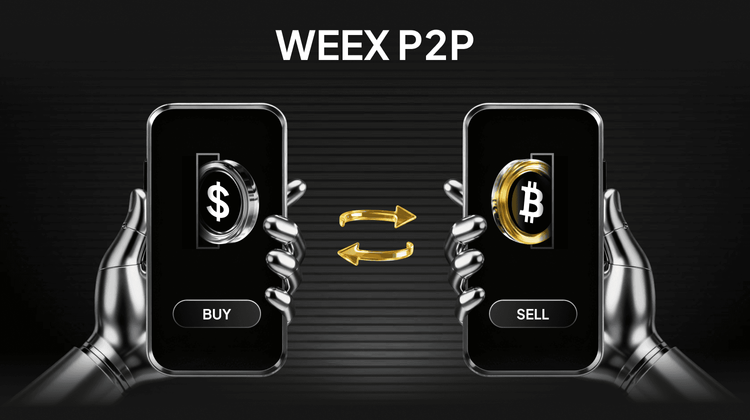
How to Buy Crypto with PKR on WEEX P2P – Fast, Safe & Zero Buyer Fees in Pakistan 2025
Looking to buy crypto with PKR in Pakistan? You’ve landed at the perfect time — and the perfect place. As of December 3, 2025, the Pakistani rupee has slipped past 279 against the dollar (another all-time low), Bitcoin is holding strong above $93,000, Ethereum is riding the post-Pectra upgrade wave, and stablecoins like USDT are the #1 hedge for anyone watching their savings shrink overnight.
But every Pakistani trader knows the pain:
5–15% premiums on local Telegram and Facebook groupsSellers ghosting after you send JazzCash or EasypaisaBank accounts suddenly froze after a big UPI-style transferNon-stop warnings on Twitter and TikTok about scams and fake OTC dealsThe fix? WEEX P2P
Zero buyer fees, verified merchants only, average 30-second releases, and full support for JazzCash, Easypaisa, Raast, SadaPay, NayaPay, and bank transfers. Whether you’re starting with 5,000 PKR or moving crores-worth, you can buy USDT, BTC, ETH, and 300+ other coins with PKR in under 3 minutes — completely safe and FIU-compliant.
What is WEEX P2P? Pakistan’s Smoothest Crypto RampWEEX P2P connects you directly with real, vetted Pakistani merchants while keeping every rupee in escrow until your crypto lands. No middlemen, no shady groups, no “send first, trust me bro” nonsense.
You get 1,000+ live PKR ads 24/7, beginner-friendly steps, and the tightest spreads in the country. Twitter and local crypto communities are full of screenshots showing 15-second trades — because that’s now normal on WEEX.
Why Pakistani Traders Are Switching to WEEX Right NowDitching traditional spot buys for WEEX P2P isn't just smart—it's a game-changer in India's evolving market. Here's why traders are flocking:
0% buyer fee — every rupee becomes crypto (save 5–15% instantly)30-second average release — many merchants auto-release the moment Easypaisa/Raast confirmsVerified merchants only — 98–99% completion rates, no ghosting horror storiesBest PKR rates live — USDT today at 278.90–279.90 PKR (often tighter than anywhere else)Start tiny or go big — from 2,000 PKR test buys to multi-million PKR deals100% escrow protection — your money is locked until you get your coinsStep-by-Step: Buy Crypto with PKR on WEEX in Under 3 MinutesBuying crypto on WEEX P2P is quick, secure, and straightforward. Whether you’re a beginner or an experienced trader, the platform guides you through each step to ensure your purchase is smooth and hassle-free.
Sign Up on WEEX Register on the WEEX website or app using your email or phone, set a secure password, and complete account verification.Verify Your Account (KYC) Upload your ID to unlock full trading features and higher transaction limits.Access Buy Crypto Interface Navigate to Assets → Overview → Buy Crypto, select PKR, and enter the amount you want to buy.Select Payment Method Choose a supported provider (e.g., local bank transfer, Easypaisa, JazzCash) and confirm your preferred option.Pick Crypto You Want to Buy Select some token from the crypto list and confirm your payment currency.Complete the Transaction Follow the payment instructions. Once confirmed, coresponding token will be credited to your WEEX wallet.With this process, buying Ethereum becomes fast, secure, and hassle-free, letting you focus on trading strategies and market opportunities.
Today’s Live Crypto Prices on WEEX P2P (Dec 3, 2025)USDT/PKR: 278.90 – 279.90 (super tight, up 0.1% today)BTC/PKR: 25,950,000 – 26,150,000ETH/PKR: 725,000 – 735,000Rates update every second — check inside the app for the absolute latest.
Frequently Asked Questions (FAQ)Q: Any fees when I buy crypto with PKR?
A: 0% for buyers. Sellers pay a tiny maker fee only.
Q: How fast do I actually get my coins?
A: Average 30 seconds via JazzCash/Easypaisa/Raast. Max 5 minutes.
Q: Is my money safe?
A: 100% — escrow holds your PKR until you confirm receipt of crypto.
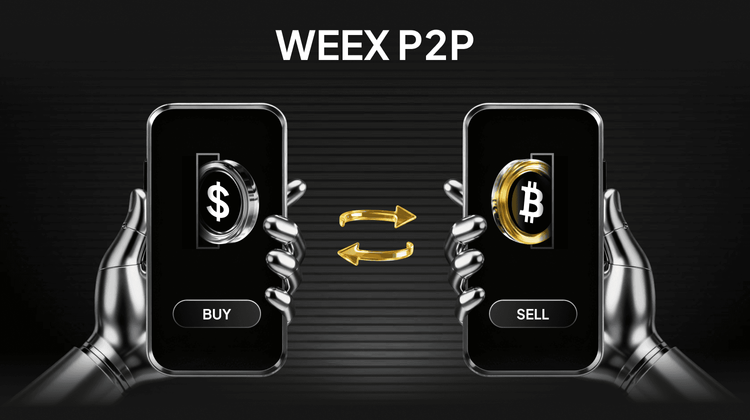
Buy Crypto with INR in India 2025 Guide: Fast, Safe & Zero-Fee Trading on WEEX P2P
Looking to buy crypto with INR in India? You're in the right place—and at the perfect time. As of December 3, 2025, the global crypto market is buzzing with cautious optimism. Bitcoin is holding above $93,000 (around ₹7.8 lakh), Ethereum is up 4% following its latest Pectra upgrade, and stablecoins like USDT remain the preferred hedge as the rupee inches toward ₹90+ per dollar.
But Indian traders know the struggle all too well:
P2P premiums of 5–10% on platforms like Binance and WazirXBank freezes from unverified sellersUPI delays, cancelled transfers, and constant risksTwitter filled with warnings about scams and unreliable OTC groupsThe good news? WEEX P2P fixes all of that.
With zero buyer fees, verified merchants, 30-second average releases, and support for UPI, IMPS, and bank transfer, WEEX lets you buy USDT, BTC, ETH, and 300+ cryptocurrencies using INR in under 3 minutes. Whether you're starting with ₹500 or scaling beyond ₹5 lakh, WEEX keeps your trades fast, safe, and compliant with India’s FIU guidelines.
What is WEEX P2P? Your Direct Line to Crypto in IndiaWEEX P2P is a peer-to-peer powerhouse that skips the corporate gatekeepers, linking you straight to trusted Indian sellers who accept local payments like UPI (via PhonePe or GPay) and bank transfers. Every deal? Locked in escrow—your rupees stay safe until crypto hits your wallet, slashing scam risks that plague Telegram groups or unregulated spots. It's not your average exchange; it's flexible for haggling rates, beginner-friendly with guided steps, and loaded with 1,000+ live INR ads 24/7. In a country where crypto's legal but taxed at 30% on gains (plus 1% TDS over ₹50,000), WEEX keeps things transparent, with easy tax reports and no hidden spreads. Twitter users are raving about similar ramps, sharing hacks to avoid P2P pitfalls and score spot rates without the hassle. Bottom line: it's global access with Indian ease, perfect for stacking amid 2025's institutional wave.
Why Buy Crypto with INR on WEEX? The Edge You NeedDitching traditional spot buys for WEEX P2P isn't just smart—it's a game-changer in India's evolving market. Here's why traders are flocking:
Zero Buyer Fees: Save 2-8% compared to WazirX or CoinDCX—no TDS surprises or withdrawal gouges.Lightning Releases: Average 30 seconds via UPI—faster than waiting for IMPS on local apps.Verified Sellers Only: 98%+ completion rates, no ghosting like those Binance P2P horror stories.Best Rates in Real-Time: Tight spreads (e.g., USDT at ₹90.17–₹90.33 today), beating competitors by 0.5-1%.Low Entry Barrier: Start with ₹100-₹500, ideal for testing amid rupee volatility.It's secure (cold storage, 2FA), compliant (FIU-registered vibes), and scales from DeFi dips to long-term holds—exactly what you need as India's crypto adoption hits 20M+ users.
Step-by-Step: Buy Crypto with INR on WEEX P2P in MinutesGrabbing crypto via INR on WEEX feels like a seamless UPI top-up—no jargon, no waits. Here's your quick path, straight from the app:
Sign Up & Verify: Download WEEX (iOS/Android/web), enter your phone/email, set a password—done in 20 seconds. Snap your Aadhaar/PAN for KYC (under 60 seconds approval, unlocking full limits).Hit Buy Crypto: Tap "Buy Crypto" → "P2P Trading" from the dashboard.Pick INR & Payment: Select INR as fiat, filter by UPI/Bank Transfer/IMPS—hundreds of ads pop up, sorted by rate and seller rating.Choose Your Coin: Search USDT, BTC, ETH (or any of 300+), enter amount (e.g., ₹5,000 for ~55 USDT at ₹90.30).Seal the Deal: Review seller details (UPI ID/bank info), send exact INR, tap "Transferred & Notify"—escrow releases crypto instantly (15-60 seconds for most).Wallet It: ETH/BTC/USDT lands in your WEEX spot wallet—trade, stake, or withdraw fee-free.That's it—hassle-free, with built-in tax tracking for India's 30% VDA rules. Pro tip: Start small to test, then scale as Twitter tips suggest arbitraging dips.
Today's Top Crypto Prices on WEEX P2P (Dec 3, 2025)Stay ahead—live INR rates update every second:
USDT/INR: ₹90.17 – ₹90.33 (stable as ever, up 0.02% today)BTC/INR: ₹7,800,000 – ₹7,850,000 (riding $93K USD highs)ETH/INR: ₹260,000 – ₹262,000 (post-upgrade surge)These tight spreads mean more crypto for your rupees—check WEEX for real-time charts.
Frequently Asked Questions (FAQ)Q: What fees should I expect on WEEX P2P? A: Zero for buyers—sellers cover a tiny spread. No TDS extras like some local spots; just pure value.
Q: How quick is crypto delivery after paying INR? A: 30 seconds average via UPI—max 5 minutes for bank transfers. Faster than most Indian exchanges.
Q: Is buying crypto with INR safe on WEEX? A: Absolutely—escrow locks funds, verified sellers only, and FIU-compliant. Ditch the P2P scam fears flooding Twitter.
What is OASIS Coin? OASIS Price Analysis
OASIS is a gaming-centric cryptocurrency designed to serve as the foundational token for an evolving decentralized metaverse ecosystem. Centered on digital identity, virtual worlds, and interconnected experiences, the project describes itself as a “Galaxy of Gaming”—positioned not merely as an in-game currency but as an economic layer for a broader, persistent virtual universe.
Rather than launching a single standalone game, OASIS aims to establish a shared infrastructure where users can navigate across multiple gaming environments, own digital assets, and participate in community-driven virtual economies. This places it within the growing intersection of gaming, decentralized finance, and the metaverse, tapping into long-term narratives around digital ownership and immersive online interaction.
OASIS Token DetailsOASIS operates on the BNB Smart Chain (BSC), utilizing its low transaction fees and high throughput to support seamless gaming and trading activity. Key token specifications include:
Blockchain: BNB Smart ChainToken Standard: BEP-20Token Symbol: OASISTotal & Max Supply: 100,000,000 OASISCirculating Supply: 100,000,000 OASISContract Address: 0x1a4d41219c547f3a0ee36cf3d9e68f80699cf283With the entire supply already in circulation, the token carries no inflationary pressure from future token issuance, placing emphasis on organic demand and ecosystem adoption.
OASIS Use Case and Ecosystem VisionThe project envisions OASIS as a multi-purpose asset within a growing virtual universe, including:
Serving as a primary medium of exchange across interconnected gaming worldsEnabling digital identity and avatar customizationFacilitating cross-platform asset portability and utilitySupporting community-driven virtual economies and governanceWhile the full ecosystem is still in development, the vision aligns with a broader trend toward interoperable, player-owned gaming environments where tokens enable both utility and user participation.
OASIS TokenomicsOASIS employs a straightforward tokenomic structure centered on scarcity and demand-driven valuation:
Fixed maximum supply of 100 million tokensNo inflationary minting or programmed token burnsValue reliant on ecosystem growth, user adoption, and market sentimentDesigned to benefit from network effects as the metaverse expandsThis model can encourage price appreciation during phases of high demand but may also increase volatility in the absence of sustained usage or during broader market downturns.
OASIS Price AnalysisRecently, OASIS achieved a new all-time high, reflecting increased trading interest and positive momentum:
All-time high: ~$0.6773All-time low: ~$0.519624-hour range: $0.6547 – $0.677324-hour change: +3.35%The token has demonstrated a generally upward trajectory since early December, although daily moves remain subject to volatility.
OASIS Technical Price AnalysisFrom a chart perspective, OASIS is currently trading near the upper bounds of its recent range:
Price is testing the upper Bollinger Band around $0.68The middle Bollinger Band near $0.669 acts as dynamic near-term supportRSI readings near 74 suggest overbought conditionsMACD remains in positive territory but shows early signs of momentum decelerationThis technical profile indicates a bullish structure that may be vulnerable to a short-term correction or consolidation if buying pressure subsides.
Key Support and Resistance LevelsBased on recent price action, notable levels include:
Immediate resistance: ~$0.68Psychological resistance: $0.70Near-term support: ~$0.669 (middle Bollinger Band)Secondary support: ~$0.660A sustained hold above the middle Bollinger Band would support continued upward momentum, while a break below could signal a period of retracement or sideways movement.
Is OASIS safe to invest in?Yes, OASIS should be considered a high-risk investment for several reasons:
Execution of its metaverse vision remains unproven and reliant on future developmentThe gaming ecosystem is still conceptual in many respectsThe token recently entered overbought technical territorySentiment in the gaming/metaverse niche can shift rapidly based on broader market conditionsWhile the project’s narrative is compelling, its long-term value will depend on tangible adoption, engaging user experiences, and sustained community growth.
ConclusionOASIS represents an ambitious attempt to build a token-driven metaverse gaming ecosystem on the BNB Smart Chain. Its fixed supply, gaming-focused narrative, and recent technical strength have fueled a notable price advance to new all-time highs.
However, overbought signals and the project’s early-stage status warrant caution. For momentum traders, OASIS offers volatility and short-term opportunity; for long-term holders, its ultimate success will hinge on whether the envisioned “Galaxy of Gaming” materializes into an active, engaged, and economically vibrant virtual universe. As with many gaming and metaverse tokens, prudent risk management and realistic timeframe expectations are advised.
Ready to trade cryptocurrencies?Join WEEX now—enjoy zero trading fees, smooth execution, and instant access. Sign up today and start trading in minutes.
Further ReadingWhat Is APRO (AT) and How Does It Work?What Is Quant (QNT)?What Is Momentum (MMT)?Disclaimer: The opinions expressed in this article are for informational purposes only. This article does not constitute an endorsement of any of the products and services discussed or investment, financial, or trading advice. Qualified professionals should be consulted prior to making financial decisions.
Trending Token Week on WEEX: New Users Share $100,000 in Rewards in Just 3 Easy Steps
Event Period:
December 17, 2025, 19:00 – December 27, 2025, 19:00 (UTC+8)
Eligibility: New users only
WEEX launches Trending Token Week, a limited-time campaign designed for new users to earn crypto rewards with simple, achievable tasks. By completing three easy steps, participants can unlock deposit bonuses, spot trading rewards, and daily futures mystery bonuses—sharing a total prize pool of $100,000.
If you’re looking for a low-barrier way to start trading trending crypto tokens while earning extra rewards, this event is built for you.
What Is Trending Token Week on WEEX?Trending Token Week is a new user welcome campaign featuring some of the most talked-about tokens in the market, including:
ETH, WLFI, UNI, PEPE, SKY, STRK, POWER, ICNT
The event combines deposit incentives, spot trading rewards, and daily futures check-ins, allowing users to earn rewards progressively while exploring both spot and futures markets on WEEX.
Step 1: Deposit and Earn 8 USDTKick off your journey by completing the deposit task.
Deposit RewardMake a net deposit ≥ 100 USDT, orDeposit the equivalent value in any eligible token:ETH, WLFI, UNI, PEPE, SKY, STRK, POWER, ICNT
Reward: 8 USDT
Net deposit = total deposits minus withdrawals during the event period.
Step 2: First Spot Trade and Get 7 USDTOnce your deposit is complete, move on to your first spot trade.
First Spot Trade RewardComplete your first spot trade ≥ 100 USDTTrade must be in one of the eligible event tokens:ETH, WLFI, UNI, PEPE, SKY, STRK, POWER, ICNT
Reward: 7 USDT
This step helps new users get familiar with spot trading while earning an instant bonus.
Step 3: Daily Futures Trading Check-In for Mystery BoxesThe final step unlocks recurring rewards throughout the event.
Daily Trading Check-InTrade ≥ 1,000 USDT in futures (any trading pair)Check in once per day Reward per check-in:
Mystery Box containing 5–10 USDT futures bonus
You can check in every day during the event and earn up to 100 USDT in futures bonuses in total.
All futures bonus rewards will be distributed after the event ends.
Reward Eligibility RulesTo claim all rewards during Trending Token Week, participants must:
Be new WEEX usersComplete tasks in sequence:1️⃣ Deposit task
2️⃣ First spot trade
3️⃣ Daily futures check-inMeet all trading and deposit requirements within the event period
Skipping earlier steps will make subsequent rewards unavailable.
Why Join Trending Token Week on WEEX?✅ Low entry threshold — start with just 100 USDT✅ Trending tokens exposure — trade popular market assets✅ Stackable rewards — deposit, spot, and futures bonuses✅ Daily incentives — earn every day you trade✅ Trusted platform — WEEX supports millions of users globally with deep liquidity and secure infrastructureTrending Token Week is not just a promotion—it’s a structured way for new users to explore the crypto market while earning real trading rewards.
Join Now and Start EarningWith a $100,000 prize pool and only a limited time to participate, Trending Token Week is your chance to start trading smarter on WEEX.
Sign up on WEEX today, complete the three steps, and claim your share of the rewards before December 27, 2025.
Shiba Inu (SHIB) Price Prediction 2026: Will SHIB Bounce Back?
Shiba Inu (SHIB) is a popular meme cryptocurrency operating on the Ethereum blockchain, created in August 2020 by anonymous developer Ryoshi. Inspired by the Shiba Inu dog breed, the token launched with a massive total supply of 1 quadrillion coins. Half of this supply was locked in Uniswap's liquidity pools, while the other half was sent to Ethereum co-founder Vitalik Buterin - who subsequently burned 90% and donated the remainder to India's COVID-19 relief fund.
SHIB's distinctive distribution model combined locked liquidity with high-profile burns and charitable donations. This strategic token allocation, coupled with viral meme appeal, transformed SHIB from a playful experiment into a top-ranking cryptocurrency by market capitalization. The project demonstrates how creative tokenomics can drive adoption in the meme coin space.
Learn More: What Is Shiba Inu and How Does It Work?
Shiba Inu (SHIB): Holder Growth Supports SHIB’s Long-Term ViabilityDespite a prolonged decline in price—down approximately 70% year-over-year and more than 90% below its all-time high—Shiba Inu has demonstrated notable resilience in its holder base. On-chain data indicates that the number of SHIB holders has grown from around 1.46 million to 1.54 million, even amid significant downward price pressure. This pattern often reflects a shift from distribution to accumulation, suggesting that a portion of the market views current levels as a long-term entry opportunity rather than an exit signal.
Large holder activity further reinforces this perspective. Whale balances have expanded by roughly 249% compared to the previous year, with mega-whale wallets increasing their holdings by about 28%. In the most recent 30-day period, whale accumulation accelerated, rising over 60%, which typically indicates strategic positioning rather than short-term trading. Concurrently, SHIB balances held on centralized exchanges have decreased by approximately 22%, reducing readily available sell-side liquidity and supporting the thesis of net accumulation.
These on-chain metrics do not guarantee price appreciation, but they do suggest sustained network participation and reduced immediate sell pressure—factors that can contribute to long-term viability even in a subdued price environment.
Shiba Inu (SHIB) Burn Activity and Market Structure RealityWhile SHIB’s token burn mechanism continues to be a topic of community discussion, its current scale remains insufficient to materially impact the circulating supply. With nearly 589 trillion tokens in circulation, burns in the range of 1 to 10 million SHIB represent a negligible proportion of total supply. For burns to meaningfully influence price dynamics, they would need to be consistently executed at a much larger scale, preferably automated and tied directly to transactional activity or ecosystem utility.
Shiba Inu (SHIB) Price Prediction 2026From a technical standpoint, SHIB appears to be in a consolidation phase within a long-term descending wedge formation. Recent price action has shown signs of seller exhaustion, supported by bullish divergence on the RSI indicator, though this does not yet confirm a trend reversal.
Key price levels to monitor include:
Resistance near $0.0000092, a break above which could signal structural improvement.Support around $0.0000075, where a sustained breach might renew downward momentum.This technical posture suggests that SHIB is currently in a phase of stabilization rather than poised for aggressive recovery, reflecting its transitional status from a meme-driven phenomenon to a token reliant on broader market cycles and sustained holder conviction.
ConclusionA data-informed outlook for Shiba Inu in 2026 points toward endurance rather than explosive growth. The token benefits from a growing holder base, significant whale accumulation, and declining exchange balances—all of which contribute to underlying stability. However, the absence of strong independent demand drivers means that SHIB’s price trajectory remains closely tied to broader altcoin market liquidity and sentiment.
Without a supportive macro environment or a significant catalyst tied to ecosystem utility, SHIB is more likely to consolidate and persist than to stage a major independent rally. Investors should view it as a high-risk asset whose performance will largely depend on market-wide cycles and sustained community engagement rather than fundamental revaluation.
Ready to trade Shiba Inu (SHIB) and other meme coins with ease? Join WEEX now — trade with zero fees, low minimums, and instant access. Sign up and start today.
Further ReadingCardano (ADA) Price Prediction for October 2025: Can $ADA Hit $1?Solana Price Prediction: Can Solana Hit $1,000?PancakeSwap (CAKE) Price Prediction: Can $CAKE Break $5?Disclaimer: The opinions expressed in this article are for informational purposes only. This article does not constitute an endorsement of any of the products and services discussed or investment, financial, or trading advice. Qualified professionals should be consulted prior to making financial decisions.
What is DO Your Meme (DOYR)? DO Your Meme (DOYR) Prediction 2026–2030
DOYR (DO Your Meme) is a recently launched meme token on the Binance Smart Chain (BSC), introduced on December 8, 2025. Positioned firmly within the speculative micro-cap category, it features a massive total supply of 444 quadrillion tokens and is driven primarily by community momentum rather than technical utility or defined use cases. Currently ranked outside the top 4600 on CoinMarketCap, DOYR exhibits the high volatility and early-stage uncertainty typical of newly emerging meme assets.
With a trading price around $0.000000000122658 and a fully diluted valuation (FDV) of approximately $118,000, DOYR represents an ultra-speculative opportunity—and risk. This analysis explores the token's market structure, behavioral patterns, and potential price trajectory through 2030.
What Is DOYR (DO Your Meme)?DOYR (DO Your Meme) is a community-driven meme cryptocurrency built on the BSC network, identified by the contract address 0x930d852edc1df7b034594ef040fa3b279fee218d. The project does not currently offer clear technological utility, a structured roadmap, or long-term development plans. Instead, its value proposition is rooted entirely in meme culture, social engagement, and speculative trading activity.
This lack of foundational utility places DOYR among the thousands of highly inflationary meme tokens that experience rapid, sentiment-driven price movements. While such tokens can occasionally deliver short-term gains, they also carry elevated risks of abandonment, liquidity loss, or fraudulent activity.
DOYR (DO Your Meme) Market SnapshotAs an extremely new asset, DOYR has traded within a narrow range between $0.000000000000122605 and $0.000000000000122678 in its first 24 hours. Its all-time high and low were both recorded on December 8, 2025, reflecting its early lifecycle stage.
Current holder numbers are low—around 303 addresses—indicating limited initial adoption alongside heightened concentration risk. Community interaction and promotional updates, largely shared via Twitter (@DOYR_DOYR) and Telegram, play a significant role in shaping short-term sentiment and trading activity.
DOYR (DO Your Meme) Price Prediction (2026–2030)DOYR (DO Your Meme) Price Prediction 2026Optimistic: If community growth accelerates and exchange listings expand, speculative interest could drive prices toward $0.000000001 – $0.00000001.Base Case: Limited traction leads to sideways movement with occasional volatility, trading in the range of $0.00000000005 – $0.0000000002.Pessimistic: Declining engagement and liquidity may push the token toward near-zero valuation.DOYR (DO Your Meme) Price Prediction 2027Optimistic: In a broader bullish market, meme tokens could experience renewed speculative interest, with DOYR potentially reaching $0.000000005 – $0.00000002.Base Case: Moderate activity with gradual decline, trading between $0.00000000008 – $0.0000000005.Pessimistic: Loss of developer and community support may lead to abandonment.DOYR (DO Your Meme) Price Prediction 2028Optimistic: In the unlikely event of a sustained viral breakthrough, prices could climb toward $0.00000001 – $0.00000005.Base Case: Continued stagnation or slow decline due to absence of utility, trading around $0.00000000003 – $0.0000000002.Pessimistic: Liquidity and interest may fully dissipate.DOYR (DO Your Meme) Price Prediction 2029Optimistic: Survival through multiple market cycles could support a price range of $0.00000005 – $0.00000008.Base Case: Low-volume persistence, with prices between $0.00000000002 – $0.0000000001.Pessimistic: Minimal trading activity remains.DOYR (DO Your Meme) Price Prediction 2030Optimistic: In a best-case scenario involving meme token resurgence or cultural relevance, DOYR could approach $0.0000001.Base Case: Fading relevance and liquidity, trading between $0.00000000001 – $0.00000000005.Pessimistic: Project inactivity leads to near-zero value.ConclusionDOYR (DO Your Meme) embodies the high-risk, high-volatility nature of emerging meme tokens on the Binance Smart Chain. While its early-stage metrics reflect speculative interest and community-driven momentum, the absence of underlying utility or long-term planning presents significant sustainability challenges.
Participants are advised to conduct thorough due diligence, verify contract details, and exercise strict risk management when engaging with newly launched meme assets. Until broader exchange support materializes, decentralized platforms such as PancakeSwap remain the primary venue for DOYR trading.
Ready to trade? Sign up on WEEX today and start trading DOYR (DO Your Meme) with ease and confidence!
Further ReadingWhat Is APRO (AT) and How Does It Work?What Is Quant (QNT)?What Is Momentum (MMT)?Disclaimer: The opinions expressed in this article are for informational purposes only. This article does not constitute an endorsement of any of the products and services discussed or investment, financial, or trading advice. Qualified professionals should be consulted prior to making financial decisions.
What Is Lucidum (LUCIC)?
Lucidum Coin (LUCIC), operating on Binance Smart Chain, introduces a transparent contract model designed to build investor trust through clear milestones and financial disclosures, trading at around $0.296 with a $48.5 million market cap.
The project emphasizes accountability with 4.5% transaction taxes funding liquidity dividends, marketing, and burns, while its roadmap ties development to BNB market cap achievements.
As a one-year-old token listed on CoinGecko, LUCIC combines meme appeal with structured growth plans amid recent 49% daily surges on PancakeSwap.
Key TakeawaysTransparent contract model discloses progress and finances, verified by independent third parties.Tokenomics include a fixed 210 million total supply, with taxes allocated to LP rewards, marketing, and deflationary burns.Roadmap development is tied to BNB market cap thresholds, targeting milestones from audits to exchange listings.Strong security profile with clean audits, no detected honeypot risks, and growing liquidity and holder base.What Is Lucidum (LUCIC)?Lucidum Coin positions itself as a project built around transparency and verifiable progress. Its core model centers on a publicly visible contract framework, ensuring that all financial flows and development milestones are disclosed in real time. This stands in contrast to many speculative token launches, where details remain opaque and inaccessible to average investors.
By linking tangible growth objectives to specific, measurable milestones, Lucidum aims to foster realistic expectations and build sustainable trust. The project has seen steady adoption, now supported by over 12,800 token holders—a testament to the appeal of its structured, community-verifiable approach within the highly competitive BNB Chain ecosystem.
Lucidum (LUCIC) TokenomicsLUCIC operates with a fixed total supply of 210 million tokens. A 4.5% transaction fee is applied to every buy and sell, distributed as follows:
1.5% to liquidity provider dividends, incentivizing long-term staking and pool stability.2% to marketing and ecosystem growth initiatives.1% to permanent token burns, creating consistent deflationary pressure over time.This tax structure is designed to align incentives across stakeholders, supporting liquidity while gradually reducing circulating supply. The contract has undergone multiple independent security audits and is publicly accessible, with no major vulnerabilities detected. The current fully diluted valuation stands at approximately $61.5 million.
Lucidum (LUCIC) RoadmapLucidum’s development is structured around progressive BNB market capitalization targets, ensuring that funding and visibility grow in tandem with genuine community interest and adoption. Key phases include:
100 BNB: Completion of third-party security audits.300 BNB: Integration with external wallets and exchange APIs.500 BNB: Expansion of marketing partnerships and mainstream visibility campaigns.5,000 BNB: Launch of dividend-earning NFTs for liquidity providers.10,000 BNB: Application for listing on tier-one centralized exchanges.This gated approach aims to create a self-sustaining growth loop, where each milestone is funded and validated by market-driven momentum rather than speculative hype.
Lucidum (LUCIC) Trading, Security, and CommunityThe primary trading pair for LUCIC is LUCIC/WBNB on PancakeSwap V2, supported by over $6.3 million in pooled liquidity. This ensures low slippage and stable trade execution for investors.
Security reviews from platforms such as Cyberscope, Honeypot.is, and QuillCheck have confirmed the contract’s safety, with no evidence of malicious code or honeypot mechanisms. Community interaction is centered on the project’s official website, Twitter, and Telegram channels, where updates are regularly shared alongside educational content.
Leveraging the speed and affordability of Binance Smart Chain, Lucidum aims to remain accessible to a broad base of retail users while pursuing structured growth through its transparent and milestone-driven model.
Further ReadingWhat Is APRO (AT) and How Does It Work?What Is Quant (QNT)?What Is Momentum (MMT)?Disclaimer: The opinions expressed in this article are for informational purposes only. This article does not constitute an endorsement of any of the products and services discussed or investment, financial, or trading advice. Qualified professionals should be consulted prior to making financial decisions.
FAQQ1: What is Lucidum Coin (LUCIC)?
A: Lucidum Coin (LUCIC) is a Binance Smart Chain-based cryptocurrency that operates under a transparent contractual framework. The project features a total supply of 210 million tokens and implements a 4.5% transaction fee, which supports liquidity provider dividends, marketing activities, and deflationary token burning to promote accountability and sustainable growth.
Q2: What are LUCIC tokenomics?
A: LUCIC applies a 4.5% tax on every transaction, distributed as follows: 1.5% is allocated to liquidity provider dividends, 2% is used for marketing, and 1% is permanently burned. The token is actively traded on PancakeSwap V2 with a liquidity pool of approximately $6.3 million and is currently held by over 12,800 wallet addresses.
Q3: How does LUCIC roadmap work?
A: The project’s roadmap is structured around achieving specific Binance Coin (BNB) market capitalization milestones. For instance, an external audit is completed upon reaching 100 BNB market cap, wallet integrations occur at 300 BNB, influencer partnerships are initiated at 500 BNB, and major exchange listings — including Binance — are targeted at 10,000 BNB market cap.
Q4: Is LUCIC safe to trade? A: LUCIC has received a GT Score of 80/100, reflecting strong on-chain metrics. Security scans from platforms such as De.Fi and GoPlus have detected no honeypot or rug-pull risks. The contract code is open-source, has passed a third-party audit, and currently has zero reported security incidents from the community.
Buy USDT with SBP-Fast Bank Transfer on WEEX P2P – 0 Fee & Ultra-Fast RUB Trades
SBP-Fast Bank Transfer is a top-choice option in Russia, offering users a fast and reliable way to buy crypto using RUB. With WEEX P2P, users can buy crypto directly through SBP-Fast Bank Transfer with zero fees, access 24/7 verified merchants, and enjoy ultra-fast release times.
Compared with Binance, Bybit, and local OTC platforms, WEEX consistently offers better RUB exchange rates, safer escrow protection, and more available ads for SBP-Fast Bank Transfer users.
With crypto adoption rising across Russia, reliable and fast access to digital assets has turned into a key requirement for users. With WEEX P2P, users can buy USDT, BTC, or ETH via SBP-Fast Bank Transfer with instant processing, 0% buyer fees, and professional merchant support.
What is P2P Trading?
Peer-to-Peer (P2P) trading allows users to buy and sell crypto directly with other users, while the platform acts as a secure intermediary.
On WEEX P2P:
Crypto is held in escrowSellers release assets only after payment is confirmedTrades are processed quickly and safelyThis ensures zero counterparty risk and allows users to pay via local banking methods for a seamless experience.
Why WEEX P2P is the Best Choice for SBP-Fast Bank Transfer Users
WEEX P2P offers key advantages to users purchasing crypto with RUB via SBP-Fast Bank Transfer:
0% fee for buyers (save 2-8% vs competitors)Fast release times (1–3 minutes on average)Official escrow protection – 100% safeSupport from small amounts to large-volume tradesBest RUB exchange rates for SBP-Fast Bank Transfer usersThousands of merchants online 24/7More SBP-Fast Bank Transfer ads than any competing platformWhether you’re buying 1,000 RUB or 1,000,000 RUB, WEEX ensures fast, safe, and cost-efficient crypto purchases.
How to Buy USDT with SBP-Fast Bank Transfer on WEEX P2P
Buying crypto with SBP-Fast Bank Transfer on WEEX is simple and fast. Follow these steps:
Register on WEEX and complete basic KYC Takes less than 1 minute.Go to Buy Crypto → P2P Trading Select RUB as your fiat currency.Filter by “SBP-Fast Bank Transfer” You will now only see advertisements that support SBP-Fast Bank Transfer transfers.Select the best merchant Compare based on:PriceCompletion rateVolumeOnline statusEnter the amount you want to buy The system will show your exact cost in RUB.Make the payment via SBP-Fast Bank Transfer Transfer the amount shown using the merchant’s bank details.Tap “Transferred, Notify Seller” The seller will verify your payment and release crypto.Your USDT will arrive instantly in your WEEX wallet — safe, fast, and with zero fees.
Frequently Asked Questions (FAQ)
Q1: Are there any fees when paying with SBP-Fast Bank Transfer? A: 0% fee for buyers. Only sellers pay a small fee.
Q2: How fast will I receive USDT? A: Usually 1–5 minutes after marking payment as sent.
Q3: Is buying with SBP-Fast Bank Transfer safe on WEEX? A: Yes. All trades use official escrow.
Q4: Do I need full KYC? A: Basic KYC is required for P2P trading.
Ready to Buy USDT with SBP-Fast Bank Transfer?
Start buying crypto in under 3 minutes — fast, safe, and 0% fee for buyers!
Start Buying USDT on WEEX P2P with SBP-Fast Bank Transfer Now!
Popular coins
Customer Support:@weikecs
Business Cooperation:@weikecs
Quant Trading & MM:bd@weex.com
VIP Services:support@weex.com
